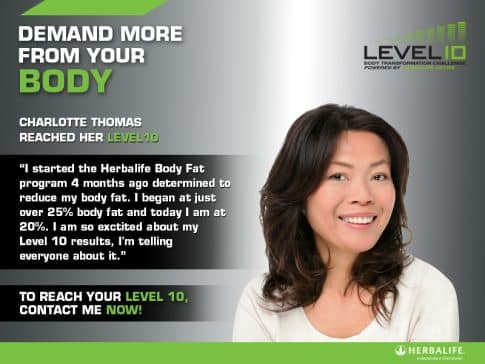
by 24fit | Jul 27, 2013 | Cardiovascular
Do you need a new challenge? A 5k is fun, sociable and achievable! This comprehensive training programme will give you all of the information you need to get you running your first 5K race in just 5 weeks. We have organised it based on three ability levels – beginner, for someone who’s never run before; intermediate, for someone who is moderately active; and advanced, for someone who considers themselves fairly active and is looking to improve his or her fitness and running time. You will learn the importance of a healthy, active life, as well as how fitness, nutrition and lifestyle work hand-in-hand to help you achieve your goals. Whether you’re new to running or already do cardio a few times a week, this plan will take you from 0 to 5K in style successfully.
Week 1 Video:
The 5 Weeks to 5k training plan can be used in conjunction with the 24FIt Workout. Phase 1 of the programme focuses on stability where the body is hardened against injury. This involves the use of light weights and other exercises to strengthen all the little “helper muscles” around the joints, which, along with a lot of stretching insures that each joint is functioning properly. This phase prepares the body for the more strenuous work to come later in the training cycle. What Robert Forster refers to as infrstraucture building for the human body, toughening the joints, creating stability at every joint. what they call “Kevlar Training” so it makes the athletes “bullet proof”, so they dont breakdown on the track. Robert has used the same programmes with beginners and elite Olympic athletes.
Read 5 Weeks To 5K Training Plan
by 24fit | Apr 24, 2013 | Level 10
12 Weeks to a Stronger, Fitter, Slimmer You – Body Transformation Challenge! Lose Weight, Lose Body Fat, Gain Lean Muscle Mass!

The New Level 10 Body Transformation Challenge encourages you to reach your ultimate goal and be the best you can be whether it be weight loss, body fat loss or even gaining muscle.
Whatever the objective Herbalife has the best nutrition solution and exercise programs.
The challenge consists of:
- Personalised Body Analysis
- Customised Meal Programme and Meal Plan
- Regular Consultations and Coach Support
- Education About Nutrition and Exercise
- Compete for 000s in Prizes and Giveaways
Coming Soon – More Details
by 24fit | Apr 5, 2013 | 24 Fit Challenge, Body Composition, Fat Burning, Motivation, Strength Training
Whether you’ve been on a nutrition or fitness program, at some point you’ll hit a plateau where it seems efforts don’t equal results.
A weight loss plateau can zap your motivation, but understanding the reasons behind it can help you meet your goals. According to Susan Bowerman, MS, RD, CSSD, “When you cut back on your calories, your body reacts as if there’s no more food coming its way. So it does what it’s programmed to do — it hangs onto stored up calories by slowing down the rate at which you burn them.”
Further, as your weight drops, your metabolic rate naturally goes down a bit, too. “That means as you lose weight, your calorie needs also drop somewhat. So, to keep losing at the same rate, you need to either cut your intake further, or exercise more — or accept that your rate of weight loss will be slower as you approach your goal.”
From an exercise perspective, you may be pushing yourself harder and harder but the results seem to be slowing. “Pushing your body to the point of exhaustion can spell disaster for your fitness goals. You’ve got to build in time for your body to recharge,” states former Olympian Samantha Clayton, Herbalife’s director, worldwide fitness education. “Then when you start training again, you’ve got a renewed energy and focus.”
Here are eight tips to move off the weight plateau:
• Use a food diary to keep track of your calorie intake – You may have been more careful when you started your diet — weighing and measuring everything that passed your lips — but you might not be as accurate as you once were. This will get you back on track.
• Replace two meals a day with a protein shake to help you stay within your calorie limit. When you make your shake, you know exactly what goes into it — and how many calories are in the protein powder, the milk and the fruit — so it takes the guesswork out of calorie counting. Use the shake for two meals a day, have a healthy third meal, and fill in with snacks of low fat protein foods, veggies and fruits.
• Dine out less often – No matter how careful you think you are when you go to a restaurant, it’s usually difficult to accurately estimate how many calories you’re eating, because it’s often hard to tell exactly how foods are prepared.
 • Step up your activity, particularly strength training – If you’ve been working out for a while and haven’t increased the intensity of your activity, you might not be burning as many calories as you used to. Add some new moves to your exercise routine, increase the intensity, and pump some iron.
• Step up your activity, particularly strength training – If you’ve been working out for a while and haven’t increased the intensity of your activity, you might not be burning as many calories as you used to. Add some new moves to your exercise routine, increase the intensity, and pump some iron.
• You might actually be at the right weight – If you can, get your body composition checked. Muscle is ‘denser’ and takes up less space than body fat — so if you are carrying more muscle than the average person, you might weigh more than you think you should. If your body fat is within normal range, then you may not have much — if any — additional weight to lose.
• Avoid fatigue – Your body needs to re-generate, restore and repair itself often. Your pain receptors will make movements uncomfortable and your joints can become tender when you push your body too hard. The nervous system also needs time to rest in order to adapt and improve from training.
• Follow your natural cycle – Athletes train in cycles for a reason, the timing of training may vary from athlete to athlete but one common factor in every athlete’s training program are pre-planned rest days. A well-rested body will get better results than a tired one.
• Spark excitement – If you are putting your body through the motions day after day, you can become complacent and your exercise intensity is likely to drop without you even realizing. Taking a day or two off from your current workout routine can make you come back to the gym with a renewed commitment and excited approach.
Bowerman is a paid consultant for Herbalife.
by 24fit | Mar 30, 2013 | Cardiovascular, Flexibility, Strength Training, Stretching
There are a hundred ways to exercises but we can lump exercise into three broad categories: strength training (weightlifting, core training), cardiovascular conditioning (running, cycling, aerobics), and flexibility training (yoga, stretching). Let’s look at the specific ways in which each promotes optimal health and function:
Flexibility Training
- Improves range of motion
- Reduces risk of injury
- Reduces post-workout soreness
- Improves posture
- Improves circulation to muscles
- Enhances neuro-muscular coordination
- Improves balance
Cardiovascular Conditioning
- Increases oxygen intake
- Increases the body’s oxygen use efficiency
- Increases cardiac output and efficiency
- Increases blood volume
- Improves stamina
- Improves lung health and capacity
- Reduces blood pressure and lowers resting heart rate
- Improves cholesterol ratio (HDL/LDL)
- Increases insulin sensitivity
- Improves circulation to active muscles
- Decreases symptoms of anxiety and depression
Strength Training
- Maintains strength and power
- Increases lean body mass
- Greater core strength prevents back problems
- Boosts metabolic rate by up to 15%, aiding in weight control
- Prevents osteoporosis
- Increases ligament tensile strength
- Increases tendon tensile strength
The 24 Fit Programme, developed by Robert Forster in conjunction with Herbalife , includes stretching exercises, metabolic workouts and strength training. Forster of Santa Monica is a physical therapist and is Founder and CEO of Phase IV Scientific Health and Performance Center in Santa Monica California specializing in rehabilitation and health and fitness programs for athletes and the general public.
One key to exercises is to find something that you can do on regular basis that dosent take too long i.e. 30 minutes, thats habit forming. With 24Fit alternate daily between cardio and strength training exercises, and include flexibility /stretching exercises with every workout.
Take the 24 Fit Challenge
Thanks to Dr. Louis Ignarro and Dr. Andrew Myers for this list. Health Is Wealth




